I was rummaging in the basement of SparkFun HQ and came across an ancient oscilloscope. With my interest piqued, I thought it’d be entertaining to dive into its history and see how this device has evolved into the modern-day oscilloscope. This measurement tool has been a tremendous asset in its contribution to SparkFun’s success, so let's take the time to understand its birth and evolution. Let’s get started…
History
The first oscilloscope was invented by French physicist Andre Blondel, who presented the device to the public in 1893. This device was capable of registering values of electrical quantities like alternating current intensity. Information was recorded using an ink pendulum attached to a coil on a moving paper, similar to a seismograph used to measure the scale of an earthquake. Blondel’s invention comprised of several mechanical devices, which made the measurements relatively inaccurate and the bandwidth rather small, between 10-19kHz. Four years later, German Scientist and Nobel Prize winner, Karl Ferdinand Braun, demonstrated the first cathode-ray oscilloscope. His work with high-frequency alternating currents led to the creation of an electronic display oscilloscope containing a cathode-ray tube (CRT). For the first time, this device provided visible patterns which graphically represented an electrical current.
Similar to most measuring equipment, oscilloscope development began to accelerate globally after World War II. In 1946, a company named Tektronix soon became the world leader in the advancement of oscillography. In turn, the manufacturing of oscilloscopes picked up, later leading to the adoption of it as an essential measurement tool for the electronics industry.
Tektronix 453 Oscilloscope
The dusty, ancient, and abandoned device found in SparkFun’s basement is a Tektronix 453 portable dual-trace oscilloscope.
This analog device was introduced in 1965, as the main market driver for IBM, who wanted a portable oscilloscope for computer engineers to work on mainframe computers. Tektronix engineers were challenged to restrain the device's size to fit under an airline seat for traveling employees.
An important part of shrinking the size was the invention of the “gear-shift” sweep knob, which allowed control of both sweeps with a single knob. The user can analyze waveforms using a regular sweep and delayed sweep by unlocking and locking the knob. For non-electrical engineers, this allows for scrolling and zooming of various sections within the waveform only using only one knob.
Another contribution to the portability of the device was the locking handle that acted as both a carrying handle and a means of positioning the unit at a convenient angle for use. This marks the first time that any oscilloscope had a lockable dual-functioning carry handle and the design was patented by Tektronix. The Tektronix 453 oscilloscope was an engineering marvel in its time. Here are some specs for those who would like to reminisce…
| Characteristic | Value |
|---|---|
| Bandwidth | 52.5 MHz |
| Rise Time | <14ns |
| Deflection | 5 mV/Div to 10 V/Div |
| Time Base | 0.1 µs/Div to 5 s/Div |
| Input Impedance | 1 MΩ |
| Probes | Two P6010 3.5 ft 10X |
| Power | 100 W |
Analog vs. Digital
Analog oscilloscopes, like the Tektronix 453, flooded the market and displayed their essence throughout the electronics industry. By 1985, a company named LeCroy came out with the first high-speed digital storage oscilloscope (DSO). The DSO uses a fast analog-to-digital converter and memory chip to record and display a digital waveform. This oscilloscope relies heavily on its effective use of the installed memory and trigger functions. Not enough memory, and the user will miss the events. Poor trigger functionality, and the user will not be able to find the events. The DSO is a beautiful balancing act.
Although, the DSO is beautiful to some, it does come at a price. Oscilloscopes are built for precision, which must undergo rigorous quality control and hands-on manufacturing. There are several things to consider when purchasing such a device, for example, its important to note input stage impedance, ADC linearity and accuracy, sampling rate, digitizing range etc.
SparkFun Dropship Partner
Keysight, a former division of Agilent Technologies, released an oscilloscope line for college students, small labs, and hobbyists. The frequencies and number of channels available make them capable of different things.
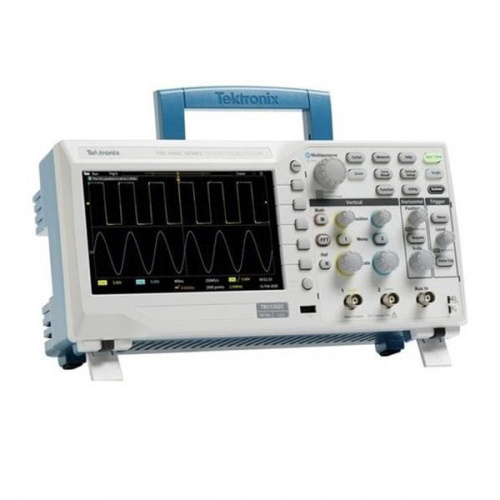
Digital Storage Oscilloscope - 50MHz (TBS1052C)
TOL-17198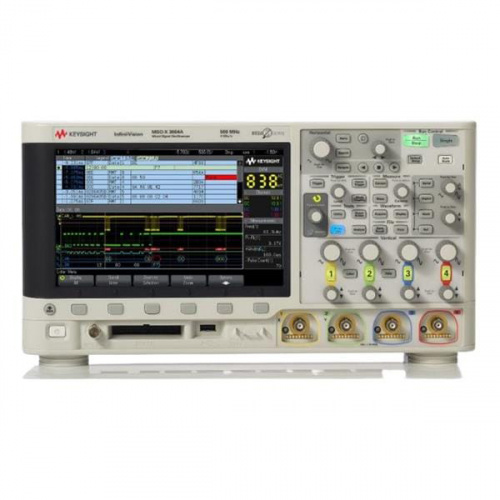
Benchtop Oscilloscope - 100 MHz, 4-Ch, with US Power Cord
TOL-20068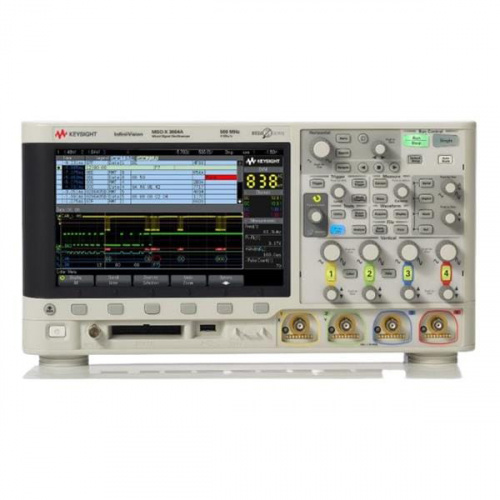
Benchtop Oscilloscope - 1 GHz, 2-Ch. with US Power Cord
TOL-20067SparkFun is a proud dropship partner of the KeySight line. If you are in the oscilloscope market, take a look at the illustrations above as they might pique your interest. Our SparkFun product pages will provide great insight for assessing your needs!
Resources and Going Further
Those looking to learn more, take a look at our How to Use an Oscilloscope tutorial.
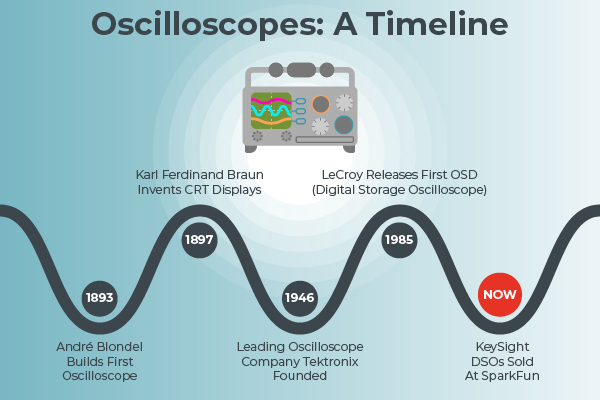
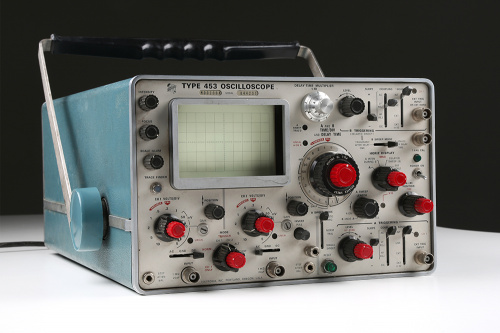
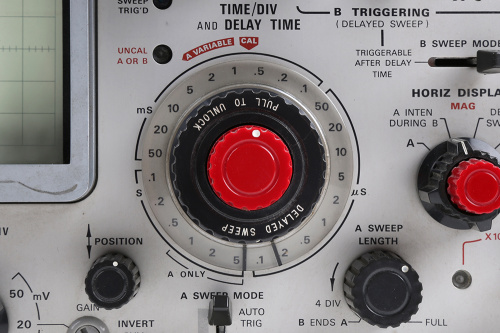
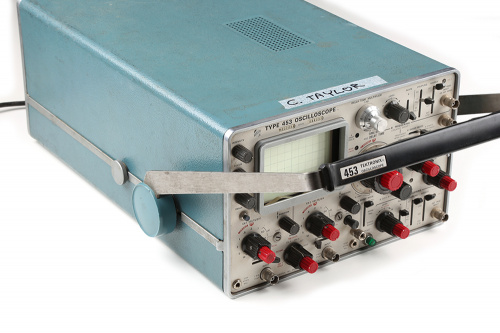
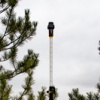
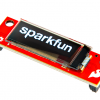
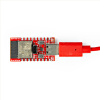
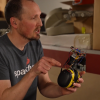
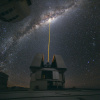






An only slightly more flat rectangle, a Tek 465 was my travel buddy in the late 70s. It fit under the airline seat in front of me like it was meant to be there. Before TSA, of course, I would catch a plane in the morning, getting there just 20-30 minutes before the flight, repair some equipment, and be back for a late dinner the same day. The 465 did the job for 5 years through all that without a hiccup.
The first scope I remember was a DuMont in my Dad's lab at Motorola in the '50s. He showed me the beauty of Lissajous figures and it may have been the start of my engineering career. DuMonts were everywhere at that time and I picked one up at a surplus store, the "Sparkfuns" of the vacuum tube days, for my hobby bench. It had a workable but finnicky triggered sweep, but it was definitely not portable.
Hmm... just wonder if TSA would allow a Tektronix 453 through today? :-) (And even if they did, I wonder if it would fit under today's smaller airline seats?)
Agilent started out as part of Hewlett-Packard, so many 'scopes from the 60s have an "HP" logo.
Also, a major supplier of 'scopes to the hobbiest market up until the late 1970s was Heath Kit. IIRC, their first kit was a 'scope using WW II surplus CRTs.